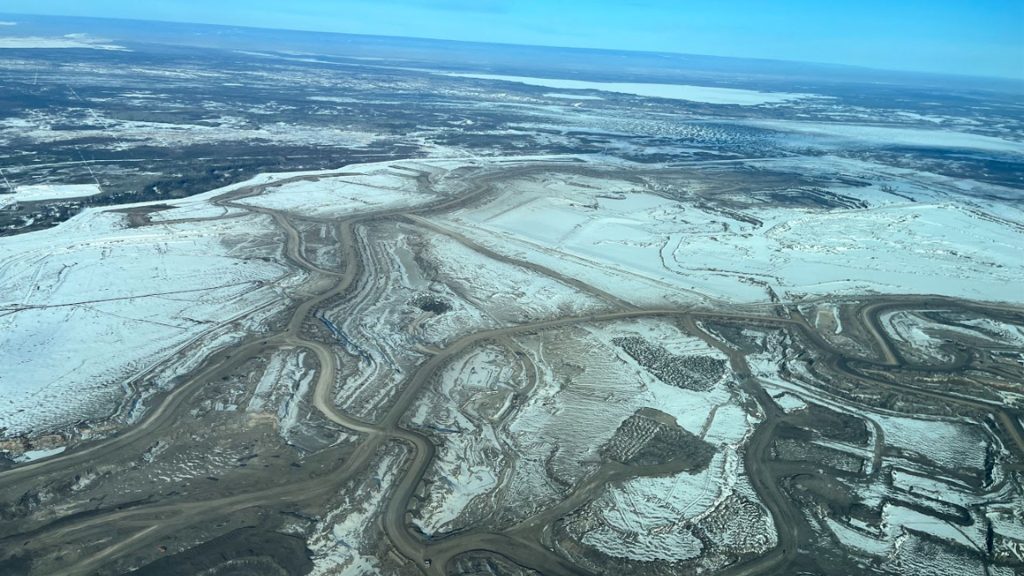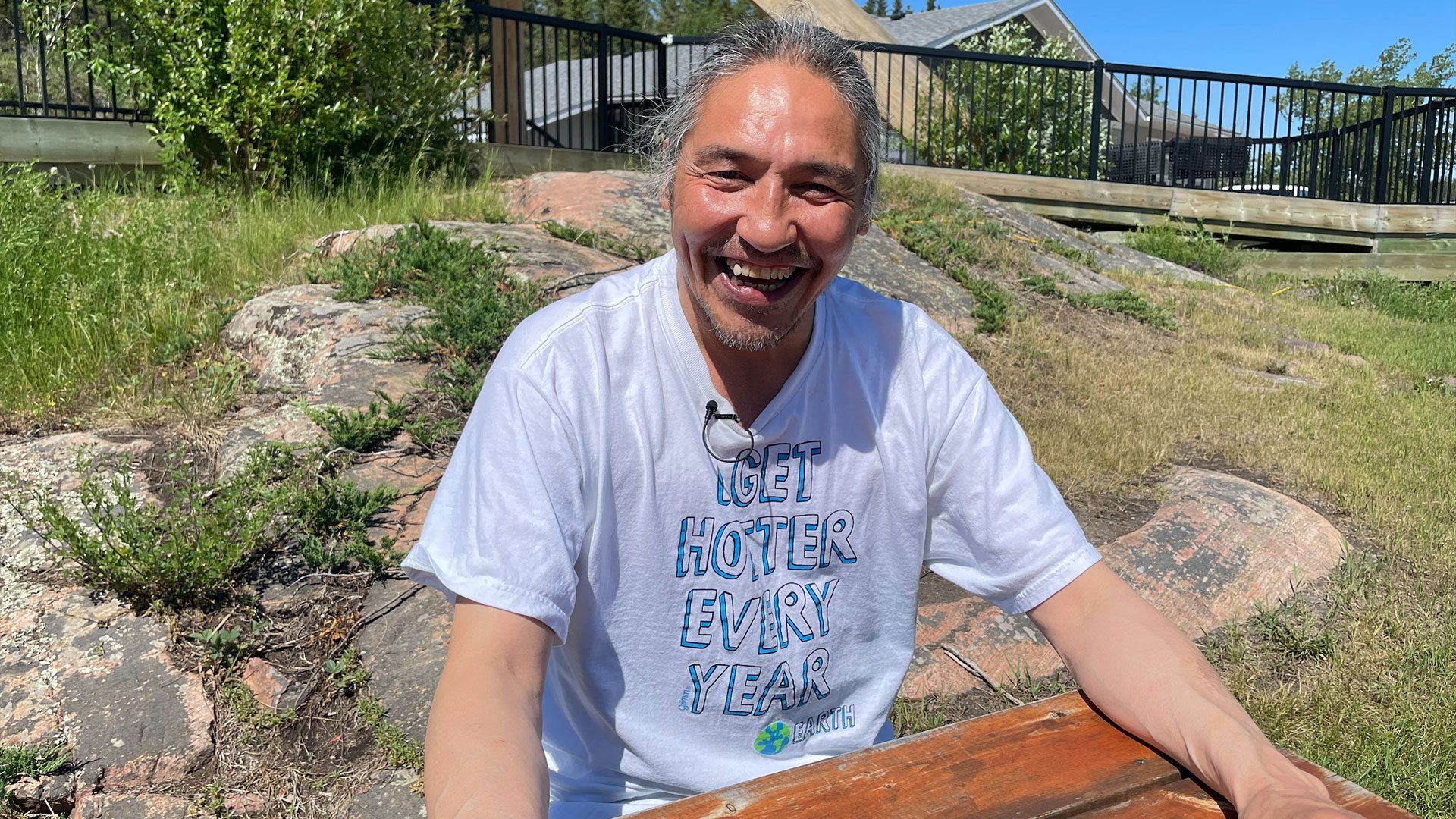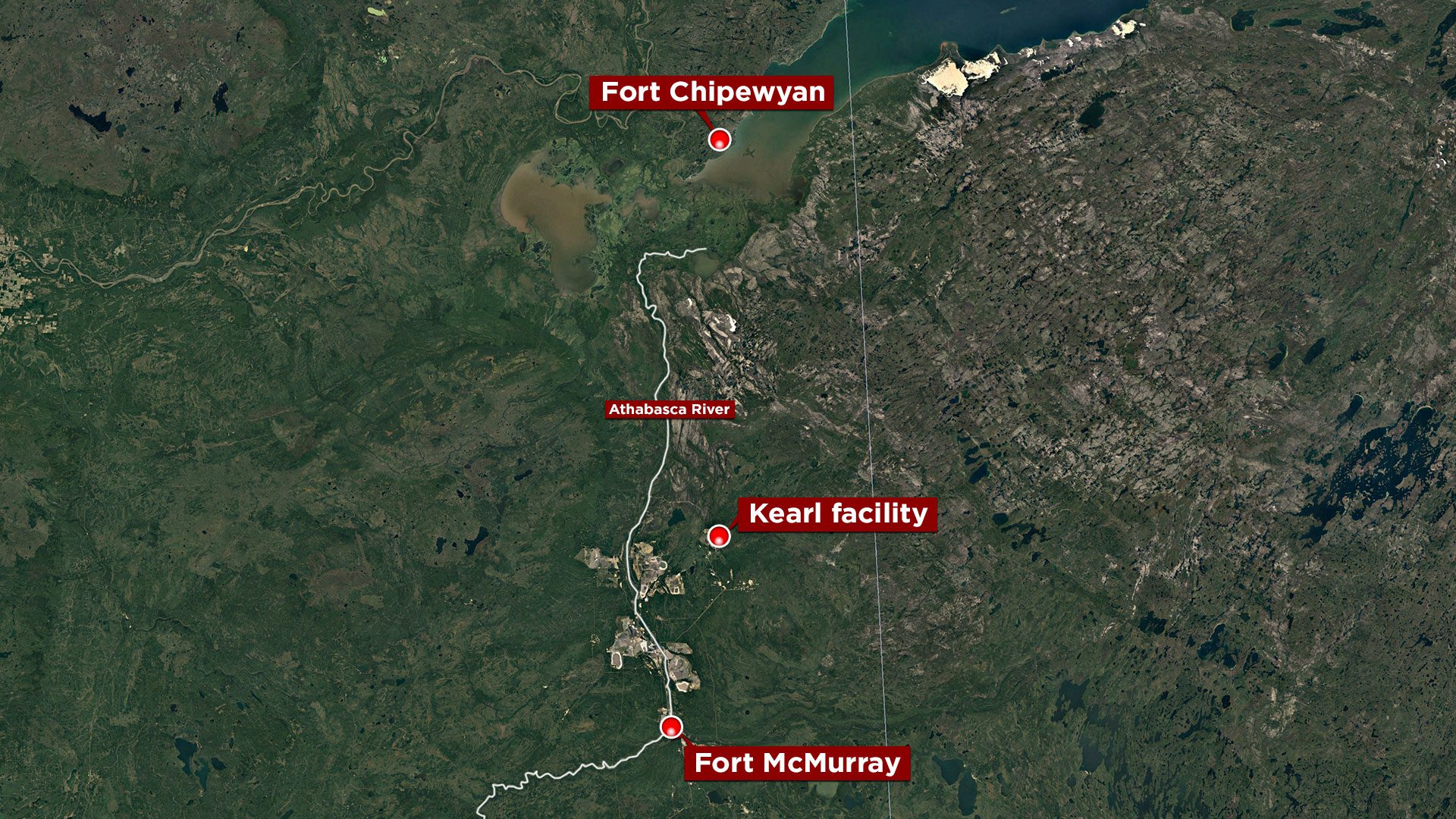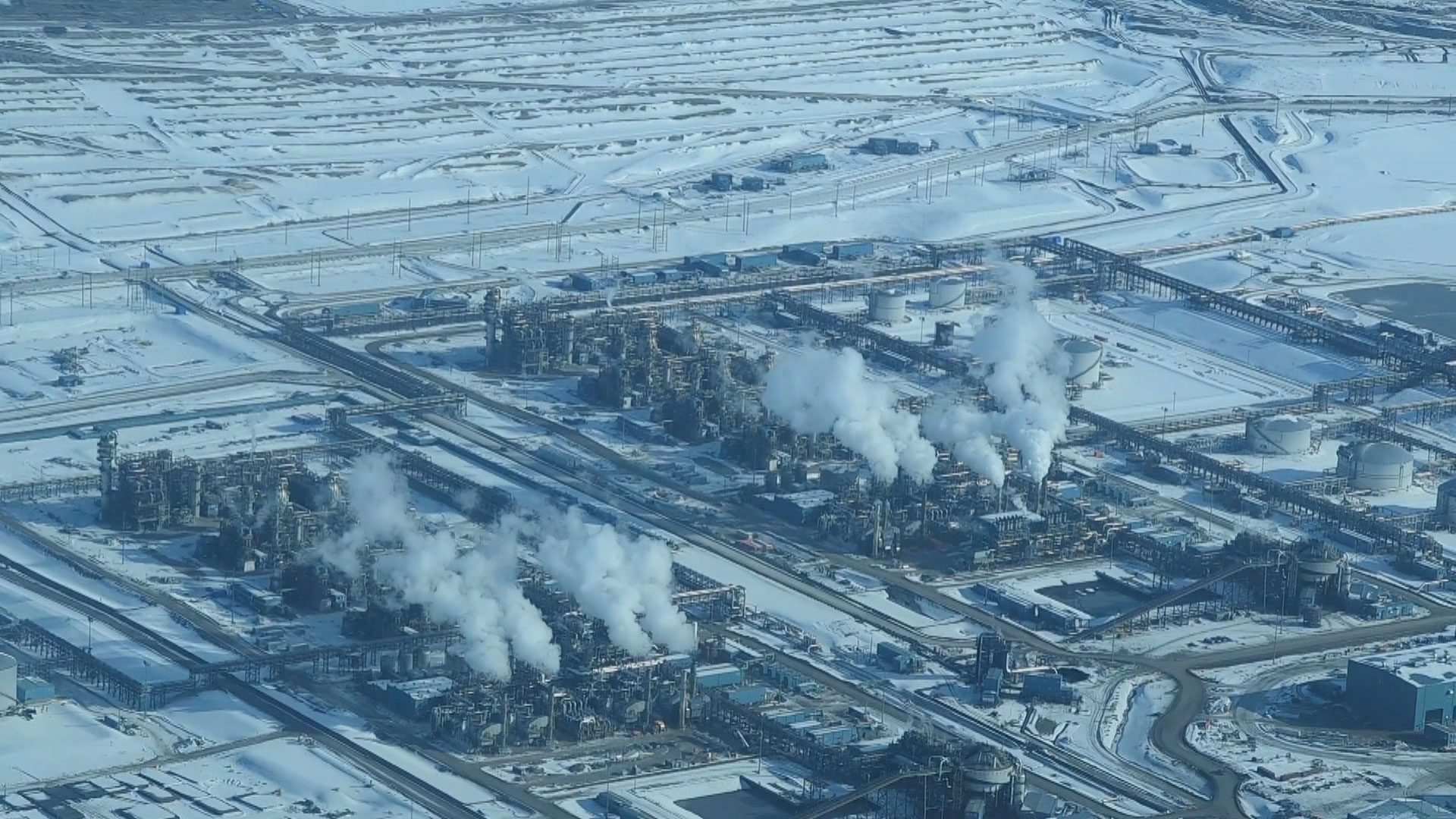
Aerial photograph from Kearl tarsands site. Photo: Danielle Paradis/APTN
Athabasca Fort Chipewyan First Nation Chief Allan Adam says he’s frustrated again with Imperial Oil Ltd. after learning that the Kearl oilsands facility had an incident where 670,000 litres from a settling pond poured into the Muskeg River.
“To me, it is just a nightmare beginning all over again,” said Adam in an interview with APTN News.
The most recent incident happened on Nov. 13. This incident follows two incidents from last year. An overland spill is what first brought the ongoing tailings pond leaks to the attention of the First Nation. The leak was an estimated 5.4 million litres or enough to fill two Olympic-sized swimming pools.

The Imperial Oil Kearl mine site is about 570 km north of Edmonton and 300 km south of Athabasca Chipewyan First Nation, Fort Chipewyan Métis Nation, and Mikisew Cree Nations.
The federal government is still investigating the tailings pond leak. In a previous statement, Environment Canada said that the seep “is believed to be deleterious or harmful” to fish.
APTN reached out to Environment Canada for an update but did not hear back by deadline.
Read more:
First Nation tells Alberta energy regulator to ‘lawyer up’ after third-party report
Anger, fear and questions mark a meeting in Fort Chipewyan with Imperial Oil
Settling pond runoff
A settling pond captures surface water runoff from oil sands mines. As the name implies, it allows for soil sediment to settle before the water is released.
Imperial spokesperson Lisa Schmidt said in an interview with APTN that the water was already approved for release but became full of sediment after going through a culvert that was partially eroded.
“This water was already moving through the channel and unfortunately there was erosion around this culvert so soil carried in there,” said Schmidt.
Schmidt told APTN that personnel placed materials in the culvert to slow the flow of the water and prevent the sediment-filled water from continuing to spill into the Muskeg.

The suspended solids in the water were more than four times the legal limit set by the Alberta Energy Regulator.
Imperial Ltd. told APTN that field data collected from the channel on Nov. 14 indicated that sediment levels were back below the allowable limit.
Adam said that the community will send their own environmental monitors to asses the situation.
“We haven’t even dealt with the investigation rom the last [incident], so we will be investigating this one here too,” said Adam.
According to a document from Fisheries and Oceans Canada “[s]ediment that is added to waters has the potential to harm fish and their habitat and thereby contravene these provisions of the Fisheries Act.”
The incident is not as likely to have as large of an environmental impact as the previous two, which led the AER to issue both a non-compliance order and an environmental protection order.

Alberta Minister of Energy and Minerals Brian Jean minimized the issue during question period on Nov. 22 by saying that he had visited Kearl site and that the leak was just “muddy water from the surrounding area.”
Adam was not impressed by Jean’s statements in the legislature.
“We have a big concern about this issue. It is going on too long and we are going to make sure the Alberta government and the Alberta Energy Regulator are held accountable for these actions,” he said.
James Snell, spokesperson for Jean said that the minister “understands the communities’ concerns” and that “safe drinking water for Albertans is our top priority.”
“The AER has assured us that the culvert is being fixed and extra testing is being done to ensure there are no impacts to drinking water,” said Snell.









